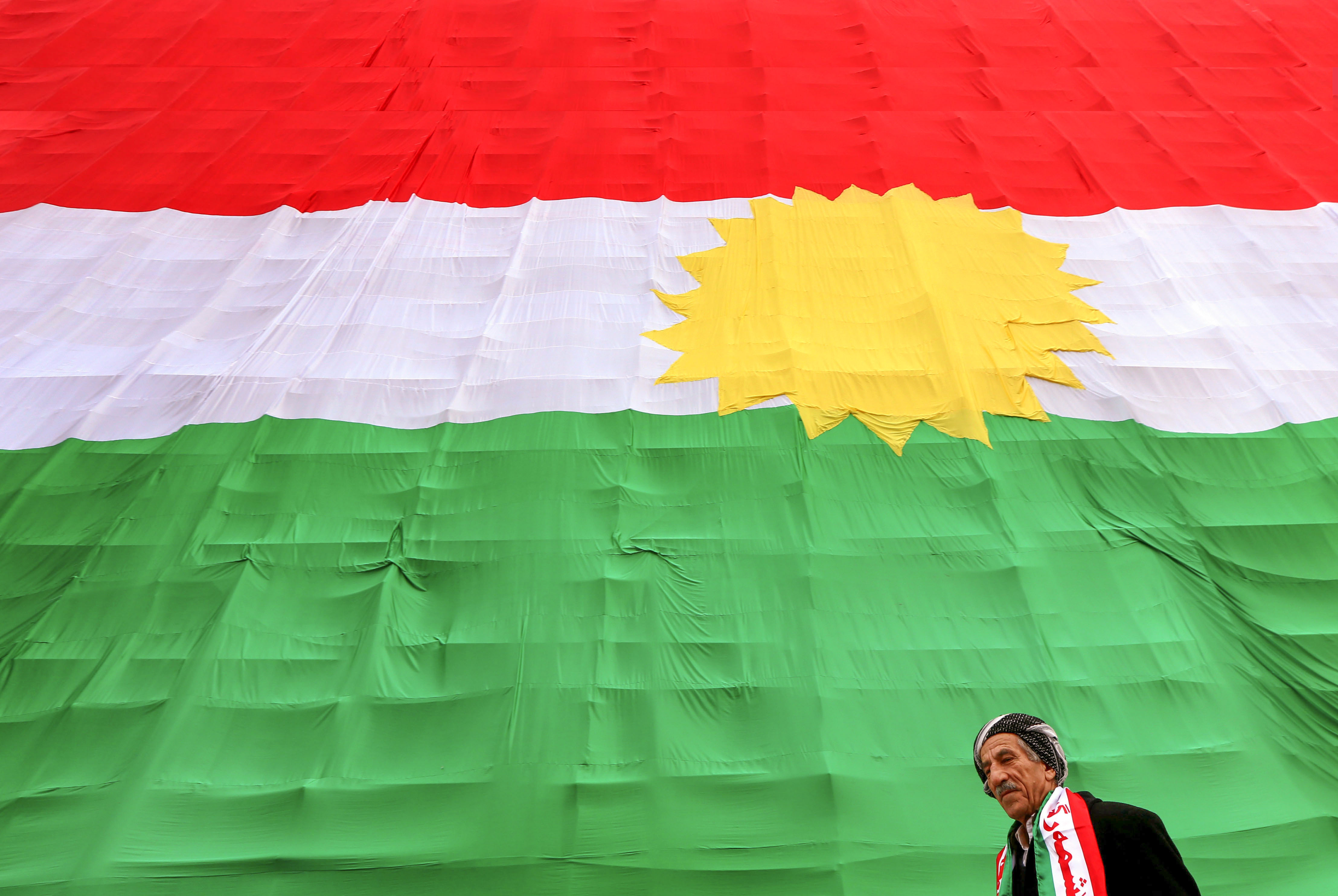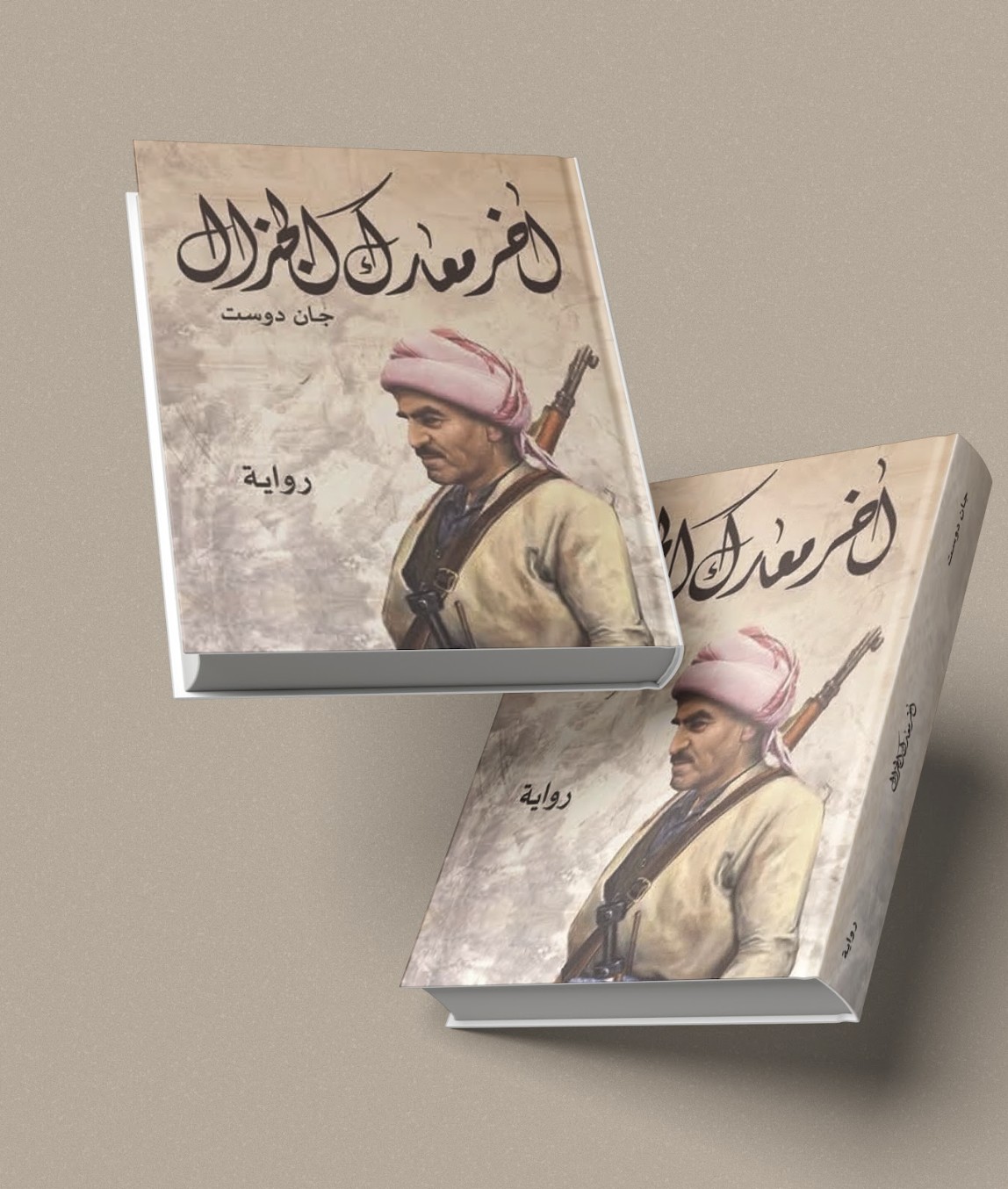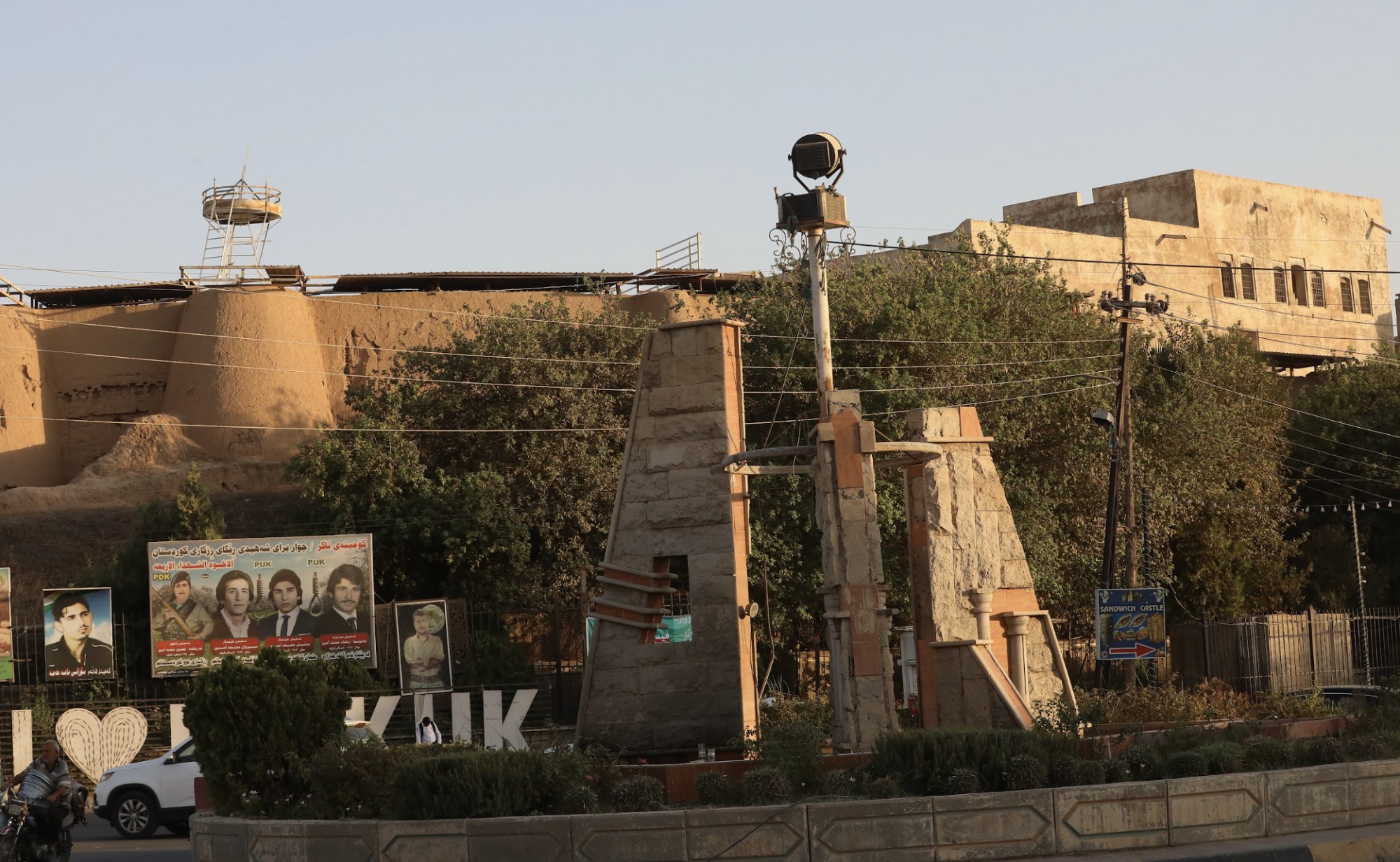Flag martyr
“Early one morning, Ibrahim enthusiastically prepared himself for work as he did every day. He smiled as we enjoyed breakfast together and engaged in small talk. Never did it occur to me that this would be our last time to be together,” said Sazgar Adel, Ibrahim’s wife.
On February 7, 2021, Ibrahim Sabah, a 36-year-old teacher was electrocuted while raising the Kurdistan Flag at the Sork primary school in the Shaqlawa district of Erbil province and sadly passed away.
Following this tragedy, President Massoud Barzani bestowed Ibrahim Sabah the title of ‘Martyr of the Flag’. Moreover, to honor Ibrahim, Prime Minister Masrour Barzani ordered the Ministry of Education to change the name of Sork to Shahid (Martyr) Ibrahim’s School.
Today, a large flag hangs in Ibrahim's living room where his wife, along with his 10-year-old daughter Ewara and eight-year-old son Awer reside. "Being fatherless has had a huge impact on our lives, but we are proud of him because he died for his country and our flag,” his children told me.
Ibrahim's sacrifice in the arms of the Kurdistan flag stirred a sincere outpouring of emotion across the Kurdistan Region of Iraq. A few weeks ago, I spoke with one of Ibrahim's close friends and former colleagues, Ayub Kamal. I could easily sense the pain of loss in his voice and how much he dearly missed his friend. “His strong feelings of patriotism really stood out; he was such a loyal friend,” said Ayub, as he choked up recounting memories of his dear friend, “He was always the rock for his friends. He would reach out to anyone who needed help and be there for them.”

How the flag unites humanity
A flag is an essential symbol of national identity but also represents the culture, identity, and history of a country. It is a constant reminder of who we are and what we fought for. If it were a mere piece of cloth, I don't believe anyone would be willing to sacrifice so much for it! The profound symbols and meanings of the flag have always carried countless stories of victory, struggle, and sacrifice. The flag instills a sense of belonging and builds national unity.
The significance of the flag lies not only in what it represents, but in what it symbolizes. Why was it created and what are the influences behind it? A nation’s flag can inspire courage, hope, and patriotism. Was it not the burning of the flag that brought the U.S. military back home from the Vietnam War? These acts were carried about by Americans who no longer wanted their sons to die in the war. The flag burning was a key reason that U.S. political leaders understood the public’s opposition to the war and eventually withdrew.
The flag thus remains a powerful reminder of what people fought for in the past, the achievements they have defended, and why they are willing to die for their country today. Disrespecting the flag of any country is like insulting the history and sacrifices of those who fought and died for their freedom. After all, the importance of the flag to the nation is immense: it inspires nationalism, pride, and a sense of unity. It is indeed much more than a mere piece of cloth.

History of Kurdistan’s flag
The origins of Kurdistan’s flag date to the conclusion of World War I. In 1919, several Kurdish intellectuals and politicians established the Kurdistan Social Organization Movement in Istanbul and designed a national flag for Kurdistan.
Years later, in 1927, the Khoyboun Movement, a Kurdish nationalist organization that supported the Ararat Uprising led by Ihsan Nuri Pasha, was founded in Lebanon. The same flag with the sun in the middle was raised in most parts of Kurdistan thereafter and was printed on the cover of the magazine Hawar, which was published in London.
There is additional evidence of this flag’s use. For example, the Turkish newspaper Vakit published a report on the joint operation of the Turkish and Iranian armies against the Ağrı revolutionaries in its August 17, 1930, issue. The newspaper also displayed a picture of Kurdistan flag with the words “Flag of Khoyboun,” with the word ‘Khoyboun’ seen on the flag.
When the Kurdish Republic of Mahabad, led by Qazi Mohammed was established on January 22, 1946, the flag from 1919 was raised, although with slight modifications. At the time Mullah Mustafa Barzani was the leading general and his fighters were the backbone of the Republic of Mahabad. In December 1946, the Iranian army surrounded the city and captured and hung Qazi Mohammed, which in turn led to the downfall of the Mahabad Republic. However, before being captured, Qazi Muhammad entrusted the flag to Mullah Mustafa Barzani.

The story of the Mahabad flag actually began in 1945, when Mullah Mustafa Barzani asked one of his Peshmerga, Nahman Issa Barzani, to make the Kurdish Flag. Nahman asked his wife Fatimah Assad to sew it by hand, which she willingly undertook. “Just give me the pattern,” she said. The same flag that was stitched by Fatima’s hands is now preserved in the Barzani National Memorial in Barzan.
Additionally, the Badr Khan family played an important role in protecting the Kurdistan flag, which was first printed in Philadelphia in 1928 on the cover of a book by Sureyya Bedir Khan entitled The Case of Kurdistan Against Turkey. The Badr Khans then safeguarded the flag for generations, passing it down from Amin Ali Badr Khan to Jaladet Badr Khan and then to Rawshan Khan and finally to Sinem Badr Khan, who ultimately presented the same flag to President Massoud Barzani as a gift.
Sinem Badr Khan stated that she feels at ease now because, “The flag has finally fallen into the rightful hands.” This flag is also housed at the Barzani National Memorial.
After the establishment of the Kurdistan Democratic Party (KDP) in August 1946 under the leadership of General Mustafa Barzani, the Kurdistan flag was flown in most of KDP’s congresses and conferences alongside the party’s flag. Eventually the Kurdistan flag was elevated to fly atop most official institutions in 1992. On November 11, 1999, the Kurdistan Parliament issued Law No-4 that the flag be officially raised throughout the region.
The Kurdistan flag consists of four colors—red, white, green and a yellow sun with 21 rays. In 2009, the Kurdistan Parliament declared December 17 as Kurdistan Flag Day, a time to renew and replace all the flags soaring above the institutions of the region. After all, it was on December 17, 1945, that the Kurdistan flag was raised and preserved above the institutions of the Republic of Mahabad.
Goran Shakhawan is a Kurdish-American journalist and author based in the United States. He covered news for several Kurdish news outlets and was a former senior correspondent for Kurdistan24 in Erbil and Washington D.C. He has published several books in Kurdish.

